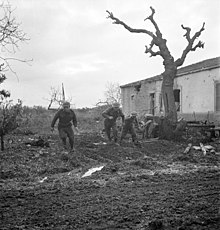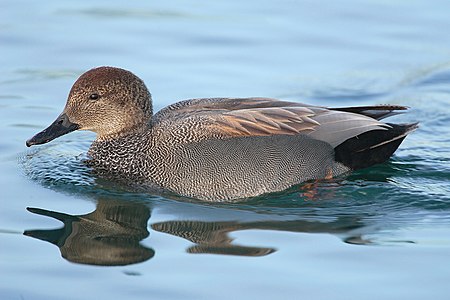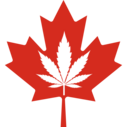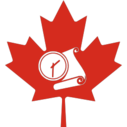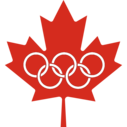Portal:Canada
| Showcase | Content | Contributing |
Introduction
Canada is a country in North America. Its ten provinces and three territories extend from the Atlantic Ocean to the Pacific Ocean and northward into the Arctic Ocean, making it the world's second-largest country by total area, with the world's longest coastline. Its border with the United States is the world's longest international land border. The country is characterized by a wide range of both meteorologic and geological regions. It is a sparsely inhabited country of 40 million people, the vast majority residing south of the 55th parallel in urban areas. Canada's capital is Ottawa and its three largest metropolitan areas are Toronto, Montreal, and Vancouver.
Canada is a parliamentary democracy and a constitutional monarchy in the Westminster tradition. The country's head of government is the prime minister, who holds office by virtue of their ability to command the confidence of the elected House of Commons and is "called upon" by the governor general, representing the monarch of Canada, the ceremonial head of state. The country is a Commonwealth realm and is officially bilingual (English and French) in the federal jurisdiction. It is very highly ranked in international measurements of government transparency, quality of life, economic competitiveness, innovation, education and gender equality. It is one of the world's most ethnically diverse and multicultural nations, the product of large-scale immigration. Canada's long and complex relationship with the United States has had a significant impact on its history, economy, and culture.
A developed country, Canada has a high nominal per capita income globally and its advanced economy ranks among the largest in the world, relying chiefly upon its abundant natural resources and well-developed international trade networks. It is recognized as a middle power for its role in international affairs, with a tendency to pursue multilateral and international solutions. Canada's peacekeeping role during the 20th century has had a significant influence on its global image. Canada is part of multiple international organizations and forums. (Full article...)
Featured article -
The Moro River campaign was an important battle of the Italian campaign during the Second World War, fought between elements of the British Eighth Army and LXXVI Panzer Corps (LXXVI Panzerkorps) of the German 10th Army (10. Armee). Lasting from 4 December 1943 to 4 January 1944, the campaign occurred primarily in the vicinity of the Moro River in eastern Italy. The campaign was designed as part of an offensive launched by General Sir Harold Alexander's Allied 15th Army Group, with the intention of breaching the German Army's Winter Line defensive system and advancing to Pescara—and eventually Rome. (Full article...)
Featured biography -
Laura Secord (née Ingersoll; 13 September 1775 – 17 October 1868) was a Canadian heroine of the War of 1812. She is known for having walked 20 miles (32 km) out of American-occupied territory in 1813 to warn British forces of an impending American attack. Her contribution to the war was little known during her lifetime, but since her death she has been frequently honoured in Canada. Though Laura Secord had no relation to it, most Canadians associate her with the Laura Secord Chocolates company, named after her on the centennial of her walk. (Full article...)
Selected panorama -
National symbol -

The Canadian (French: cheval canadien) is a horse breed from Canada. It is a strong, well-muscled horse, usually dark in colour. It is generally used for riding and driving. Descended from draft and light riding horses imported to Canada in the late 1600s from France, it was later crossed with other British and American breeds. During the 18th century the Canadian horse spread throughout the northeastern US, where it contributed to the development of several horse breeds. During the peak popularity of the breed, three subtypes could be distinguished, a draft horse type, a trotting type and a pacing type. Thousands of horses were exported in the 19th century, many of whom were subsequently killed while acting as cavalry horses in the American Civil War. These exports decreased the purebred Canadian population almost to the point of extinction, prompting the formation of a studbook and the passage of a law against further export. (Full article...)
Selected vital article -
The military history of Canada comprises hundreds of years of armed actions in the territory encompassing modern Canada, and interventions by the Canadian military in conflicts and peacekeeping worldwide. For thousands of years, the area that would become Canada was the site of sporadic intertribal conflicts among Indigenous peoples. Beginning in the 17th and 18th centuries, Canada was the site of four major colonial wars and two additional wars in Nova Scotia and Acadia between New France and British America; the conflicts spanned almost seventy years, as each allied with various First Nation groups. (Full article...)
Selected picture -
Current events
- May 3, 2024 – Canada–India diplomatic row
- Three Indian men are arrested in Canada and charged with the murder of Sikh separatist leader Hardeep Singh Nijjar last year. The Canadian government is investigating whether the men had ties to the Indian government. (Reuters) (Toronto Star)
- April 12, 2024 – War in Sudan
- Canada pledges $132.2 million dollars to Sudan to help people affected by the country's ongoing humanitarian crisis. (Global News)
- April 1, 2024 – Israel–Hamas war
- Seven volunteers from the World Central Kitchen, including six British, Polish, Australian and Palestinian nationals and a dual American-Canadian citizen, are killed in an Israeli airstrike south of Deir el-Balah. (Al Jazeera)
- March 31, 2024 – Haitian crisis
- Canada deploys 70 members of its armed forces to Jamaica to train peacekeepers for a future intervention in Haiti. (CBC News)
- March 9, 2024 – Israel–Hamas war
- Canada and Sweden resume funding for UNRWA, which had been suspended following the UNRWA October 7 controversy. (BBC News)
- March 6, 2024 – Killing of the Wickramasinghe family
- A Sri Lankan family, of four children and their mother, are killed with the father injured in a mass stabbing at a residence in the suburb of Barrhaven, in Ottawa, Canada. A young man is arrested. (CBOT-DT)
Did you know -

- ... that 1.8 percent of people in Japan have used cannabis, compared to 44.2 percent of Americans and 41.5 percent of Canadians?
- ... that Canadian pentathlon champion J. Howard Crocker introduced volleyball to China?
- ... that Canadian paediatrician Gladys Boyd was one of the first physicians to treat diabetic children with insulin?
- ... that the documentary comedy films Being Canadian and When Jews Were Funny explore the filmmakers' cultural identity through interviews with dozens of comedians?
- ... that because of the increasing prevalence of sesame allergy, the U.S. will join the EU and Canada in 2023 in instituting mandatory food labeling?
- ... that Dan Finnerty was cast in Single All the Way so that he could cross the Canada–U.S. border and join his wife, Kathy Najimy, on the set of the film?
- ... that Paul Joseph Cini, a Canadian skyjacker, thought that he could evade justice by parachuting from the plane before landing?
Featured list -
The Lionel Conacher Award is an annual award given to Canada's male athlete of the year. The sports writers of the Canadian Press (CP) first conducted a poll to determine the nation's top athlete, of either gender, in 1932. Separate polls for the best male and female athletes were conducted beginning the following year. The CP formalized the poll into an award in 1978, presenting their winner a plaque. It was named after Lionel Conacher, a multi-sport champion whom the news organization had named its top athlete of the half-century in 1950. The award is separate from the Northern Star Award, in which a select panel of sports writers vote for their top overall athlete. (Full article...)
Main articles
Associated Wikimedia
The following Wikimedia Foundation sister projects provide more on this subject:
-
Commons
Free media repository -
Wikibooks
Free textbooks and manuals -
Wikidata
Free knowledge base -
Wikinews
Free-content news -
Wikiquote
Collection of quotations -
Wikisource
Free-content library -
Wikiversity
Free learning tools -
Wikivoyage
Free travel guide -
Wiktionary
Dictionary and thesaurus



